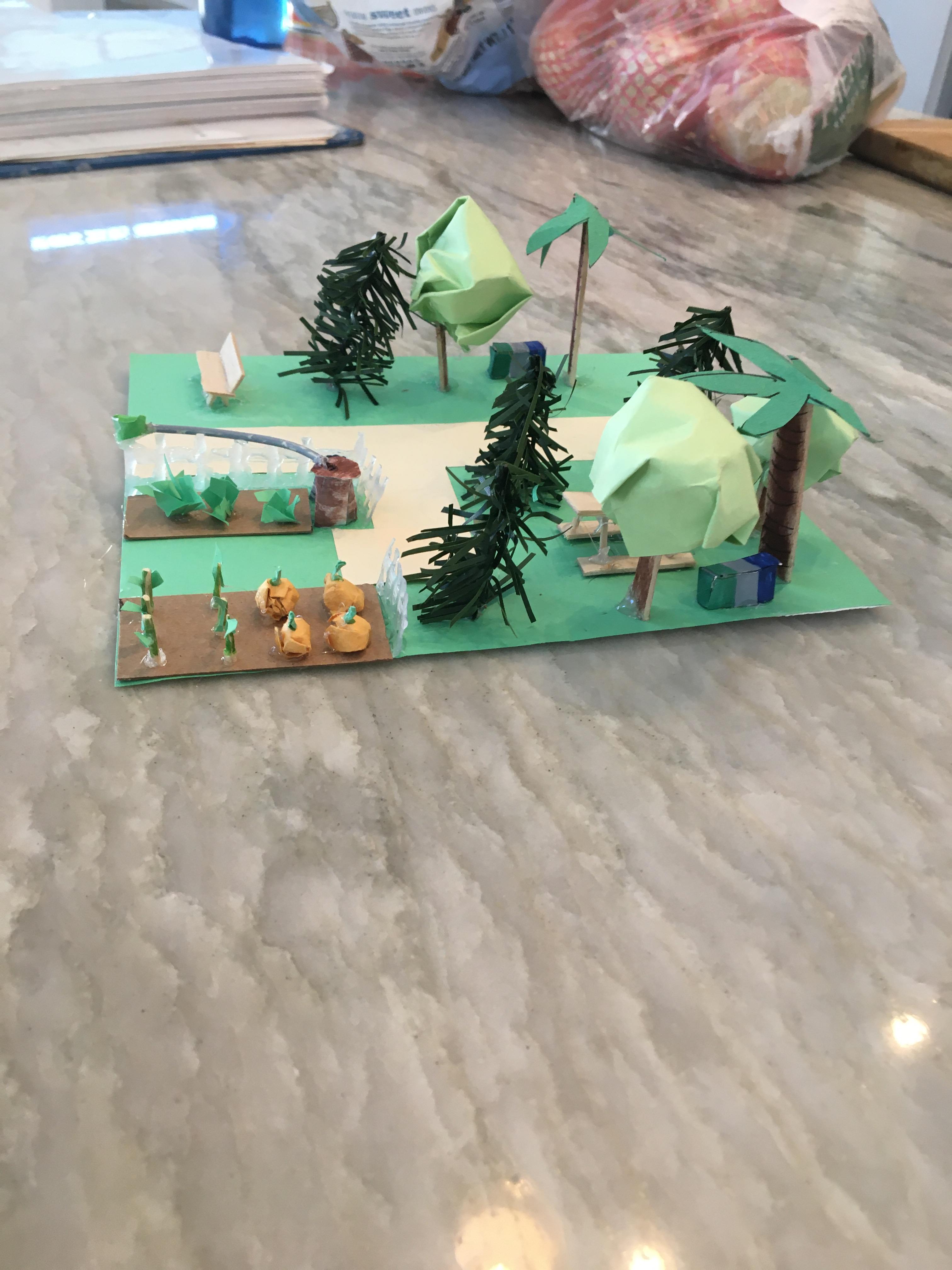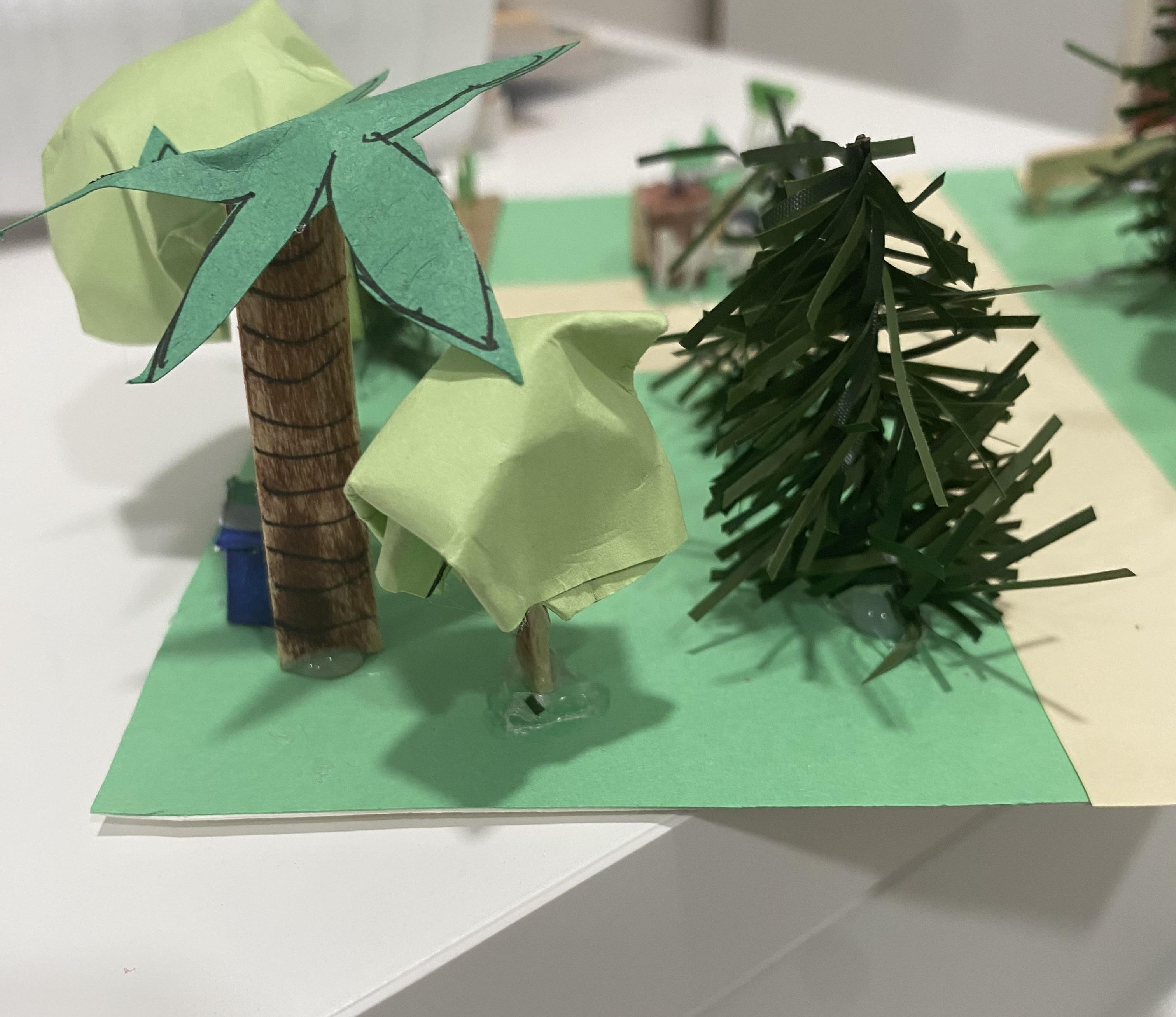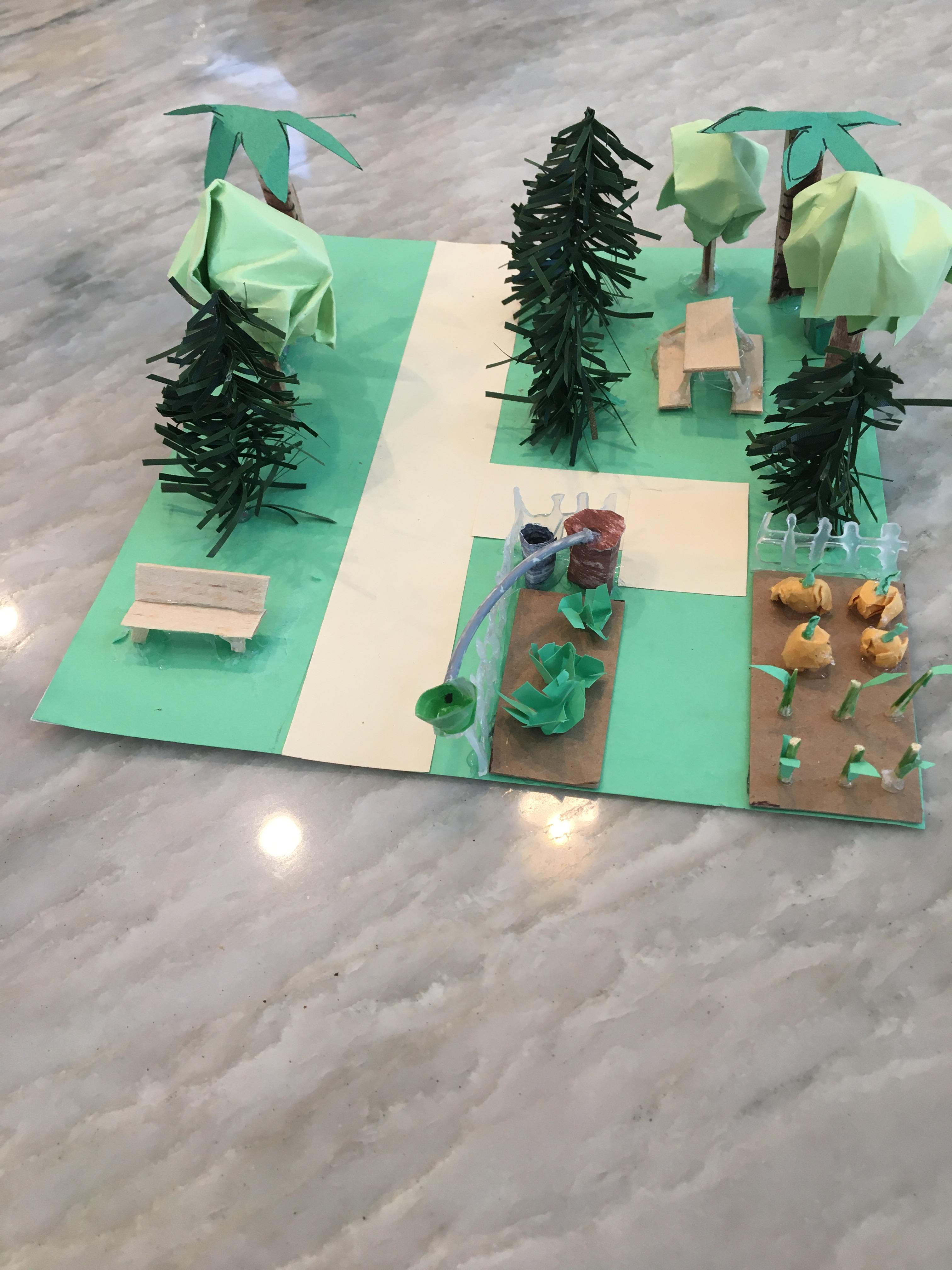Self Sustainable Community Park


For this project, I wanted to create something that would be environmentally friendly, as well as having an important place in a town or neighborhood.
This is a 3-D model of a sustainable community park. It includes a vegetable garden, rainwater harvesting system, and composting (which will make soil for the garden). I wanted to create a self sustainable community garden to limit environmental impact, as industrial farms use lots of resources such as water and transportation emission. In my self-sustainable garden, compost and rainwater provide most resources for the plants.
Another benefit of a neighborhood park is that it is a place where community members can meet and build connections. The garden is a place where volunteers can socialize, while also taking care of the plants and making a difference in their community.
Supplies
- Craft Sticks
- Hot Glue Gun
- Green Paper (different shades)
- Orange Paper
- Brown Card stock
- Sturdy Piece of Card Stock or thin Cardboard
- Artificial Trees
- Coloring Tools
- Small Cord
- Toothpicks
Software Used: Tinkercad
Research
First, I found information on ways that parks and gardens could be considered sustainable. I found that composting and rainwater harvesting are two of the many ways. Next, I did research about the rainwater harvesting system I included in my model. I found some reference photos and information, and made mine based on several photos and diagrams of rainwater collecting systems. Lastly, I did my research on composting. I decided to include a main composting bin in the garden, and two separate composting cans throughout the park, which would empty into the main bin in the garden.
Designing the Park


For this step, I used Tinkercad to make a design of my park to use as reference when building the 3-D model. I wanted to make the park with a central path, and a smaller trail branching off to the garden. I also added essential park items: trees, benches, trash and recycling cans, and a picnic table. First, I created the base and the path, then the trees. I then added a park bench and a picnic table. Lastly, I designed the garden area, which included the fences, vegetables, rainwater harvesting system, and composting bin.
Building the Model-Base, Trees, Table, and Bench




For this step, I used a sturdy piece of card stock as my base, and covered it with green paper. I then cut and glued down the path, which I made out of beige paper. For the trees, I made trunks out of craft sticks, and used paper for the leaves. For the palm tree, I cut out six leaves and hot glued them to the trunk. Next, to make the maple tree, I crumpled green paper and glued it on the trunk. I also used artificial trees as pine trees. Then, for the bench and table, I cut craft sticks and glued them together. I also added trash and recycling cans which I made out of paper and colored with markers.
Building the Model-Garden


For the garden, I made the fence out of hot glue. First, I drew the fence design with hot glue on parchment paper, then took it off when it was dry. Next, I made the rainwater system and the compost bin. For the barrel and the bin, I used brown and black paper. For the water pipe, I used a small gray cord, and I used paper for the green water bin. I glued the barrel, pipe, and water bin together to make the rainwater harvesting system. Finally, I built the base (dirt) for the garden out of brown card stock, and used paper for the plants, with toothpicks as stems.
Conclusion

I enjoyed this project very much, and learned a lot about self-sustainable gardens and parks. It was a fun experience for me because I love bringing my ideas to life. I hope this project will inspire more environmentally-friendly parks and community gardens in the future.